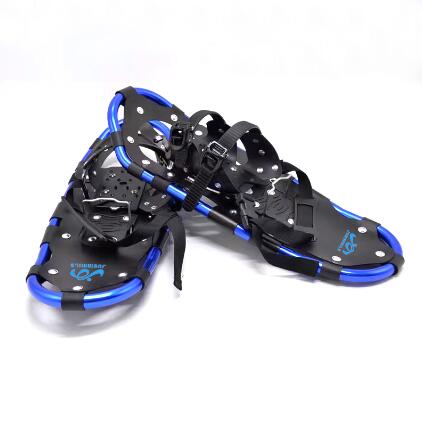The Weighty Decision: Impact of Aluminum Alloy Choice on Snowshoe Performance
2023-12-27
Introduction:
In the world of snowshoeing, the choice of materials is a critical factor influencing performance, and at the heart of this decision lies the type of aluminum alloy used in the construction of the snowshoes. This blog explores how the selection of aluminum alloy significantly impacts the overall weight of snowshoes and, in turn, shapes the user's experience across different snow conditions.
1. Aluminum Alloy and Lightweight Advantage:
The primary allure of aluminum alloy in snowshoe construction lies in its exceptional lightweight nature. Unlike heavier materials such as steel, aluminum alloy strikes a balance between strength and weight, making it an ideal choice for those seeking a comfortable and agile snowshoeing experience.
2. Reduced Fatigue in Varied Terrains:
The overall weight of snowshoes is a crucial factor, especially when navigating through different terrains. In deep, powdery snow, lightweight aluminum alloy snowshoes allow users to stay on top of the surface, minimizing the effort required to lift and maneuver each step. This reduction in weight contributes to a significant decrease in fatigue during extended treks.
3. Versatility Across Snow Conditions:
- Deep Powder: Heavy snowshoes can quickly become a burden in deep powder, impeding movement and turning a snowy adventure into an exhausting endeavor. Aluminum alloy's lightweight nature ensures that users can effortlessly navigate through deep snow without feeling weighed down.
- Icy Surfaces: On icy surfaces, the reduced weight of aluminum alloy snowshoes allows for better traction and stability. The lighter load on each foot enhances control and reduces the likelihood of slipping, providing a safer and more enjoyable experience.
4. Uphill Ascents and Downhill Descents:
- Ascents: Lightweight aluminum alloy snowshoes shine during uphill climbs. The reduced burden on the user's legs and feet makes ascending slopes more manageable, allowing for a more energy-efficient and enjoyable journey.
- Descents: When descending, the reduced weight minimizes the impact on joints, contributing to a smoother and more controlled descent. This is particularly crucial when navigating steep and challenging slopes.
5. Considerations for Long-Distance Treks:
- Lightweight snowshoes are especially advantageous for those embarking on long-distance treks. The reduced weight translates to less exertion over time, enabling users to cover greater distances without sacrificing comfort or increasing the risk of fatigue-related injuries.
6. Optimizing Performance with Aluminum Alloy:
Manufacturers leverage the properties of different aluminum alloys to fine-tune the weight of snowshoes. By selecting specific alloys, they can achieve an optimal balance between strength, durability, and weight, ensuring that users enjoy a responsive and efficient snowshoeing experience.
Conclusion:
The choice of aluminum alloy in snowshoe construction plays a pivotal role in shaping the overall weight of the equipment and, consequently, the user's experience in diverse snow conditions. As winter enthusiasts strap on their aluminum alloy snowshoes, they embark on adventures with equipment designed to enhance performance, reduce fatigue, and provide a lightweight platform for exploration in the winter wonderland.



